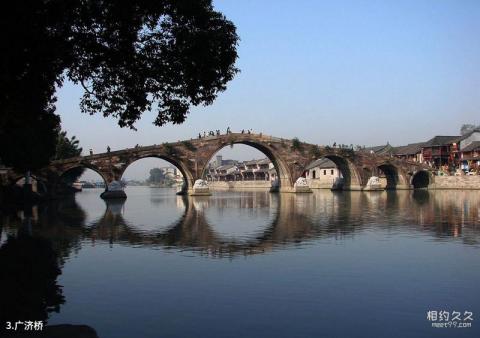
Introduction to Guangji Bridge: Guangji Bridge is the only seven-hole stone arch bridge on the Beijing-Hangzhou Grand Canal. It was built in the seventh year of Hongzhi in the Ming Dynasty (AD 1494). It is 78.7 meters long, 5.2 meters wide at the top, and 13.86 meters high. Mi, formerly known as Tongji Bridge, Bitian Bridge, and commonly known as Long Bridge. There are 80 stone steps on each slope of Guangji Bridge. The stone railings are plain, with cirrus-patterned drum-holding stones at both ends. There are a total of 64 pillars, and lotuses are carved on the four corner pillars. The Guangji Long Bridge is as powerful as a rainbow and has a beautiful shape. After more than 500 years, it still dominates the Beijing-Hangzhou Grand Canal. It has become a true witness of the vicissitudes of history. Together with the wealth and prosperity of the south of the Yangtze River, it has been written into Beijing and Hangzhou with the sound of oars and the sound of boatmen's trumpets. In the 500 years of prosperous water transportation history of the Grand Canal. Guangji Bridge is the pride of Tangqi. Some people call it the dragon's nose of Tangqi. It is tall and straight. In the past, there was a folk custom of "walking on the bridge" here. On the Lantern Festival on the 15th day of the first lunar month every year, in addition to eating Lantern Festival, welcoming lanterns and guessing lantern riddles, there is also a saying of walking on a bridge to pray for blessings. Walking on bridges is a folk custom in Jiangnan. It is said that the more bridges you walk on the Lantern Festival night, the more blessings you will get. So that night, people gathered in groups, carrying lanterns, and walked along the river and on the bridge. From a distance, it was really spectacular.
